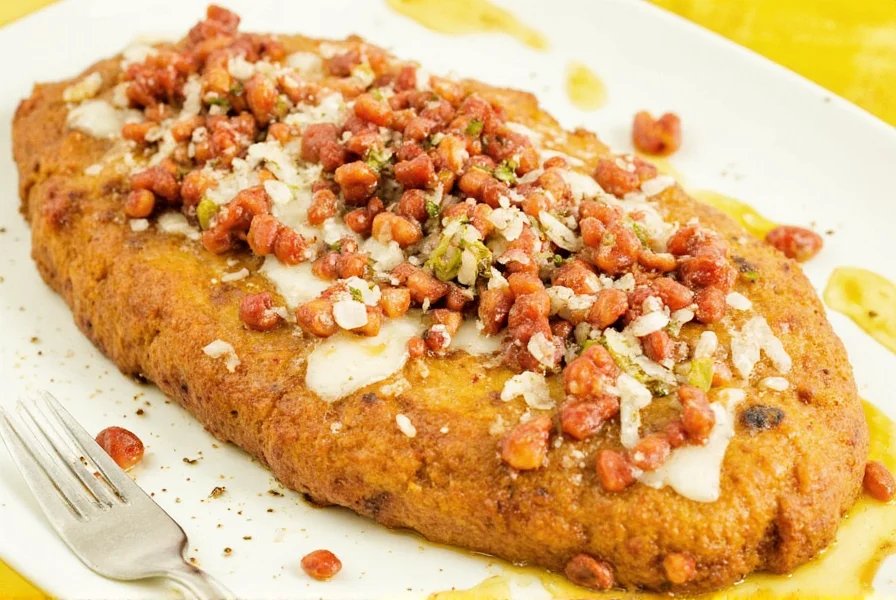BBQ sauce in Spanish is most commonly referred to as Salsa Barbacoa or Salsa para Asar. These terms are used across Spanish-speaking countries, though regional variations exist. Unlike American BBQ sauce, Spanish versions often feature olive oil, sherry vinegar, and smoked paprika for a distinct flavor profile.
Spanish BBQ Sauce vs. American BBQ Sauce: Key Differences
| Feature | Spanish BBQ Sauce | American BBQ Sauce |
|---|---|---|
| Base | Tomato + Olive Oil or Vinegar | Tomato + Molasses or Corn Syrup |
| Flavor Profile | Fruity, Smoky, Herbal | Sweet, Tangy, Spicy |
| Spice Level | Mild to Medium | Medium to Hot |
| Common Additives | Sherry vinegar, smoked paprika, herbs | Brown sugar, liquid smoke, chili powder |
| Typical Use | Glaze, marinade, dipping sauce | Dipping, basting, finishing |
Core Ingredients in Authentic Spanish BBQ Sauces
Spanish BBQ sauces emphasize fresh, regional ingredients that create balanced flavors. Key components include:
- Smoked Paprika (Pimentón) – Adds deep smokiness without excessive heat
- Sherry Vinegar – Provides complex acidity and nutty notes
- Olive Oil – Creates rich texture and Mediterranean character
- Dried Herbs – Thyme, rosemary, or oregano for earthy depth
- Garlic & Citrus – For aromatic freshness and balance
How to Use Spanish BBQ Sauce Like a Pro
Traditional Spanish grilling techniques use sauce sparingly as a finishing touch rather than heavy coating. Best practices include:
- Marinade Base: Mix with olive oil and herbs for chicken or pork
- Finishing Glaze: Brush during last 2-3 minutes of grilling
- Dipping Sauce: Serve alongside grilled vegetables or seafood
- Tapas Enhancement: Drizzle over patatas bravas or croquetas
Where to Find Authentic Spanish BBQ Sauces
Look for products labeled "Salsa Barbacoa" or "Salsa para Asar" in:
- Specialty Spanish grocery stores
- Online retailers specializing in Mediterranean products
- Supermarkets with international aisles (check ingredient lists for authentic components)
When purchasing, verify key ingredients like sherry vinegar, smoked paprika, and olive oil to ensure authenticity.
FAQ About BBQ Sauce in Spanish
What's the most common term for BBQ sauce in Spain?
In Spain, "Salsa Barbacoa" is the most widely used term, though "Salsa para Asar" (literally "grilling sauce") is also common. Traditional Spanish cuisine doesn't have a direct equivalent to American-style barbecue, so these terms have gained popularity through international culinary influence.
Is Spanish BBQ sauce vegan?
Many traditional Spanish BBQ sauces are naturally vegan, as they primarily use plant-based ingredients like tomatoes, olive oil, smoked paprika, and herbs. However, some modern variations may contain dairy or other animal products. Always check ingredient labels for specific dietary needs.
Can I substitute Spanish BBQ sauce for regular BBQ sauce?
Yes, but expect different flavor characteristics. Spanish versions tend to be less sweet and more herbaceous with distinctive ingredients like sherry vinegar and smoked paprika. Adjust recipes by adding a touch of sweetness if needed to balance the flavors according to your preference.
What does 'Salsa para Asar' mean?
"Salsa para Asar" translates to "grilling sauce" and directly references Spanish grilling traditions. While "barbacoa" is borrowed from English barbecue terminology, "para asar" is a native Spanish term for the cooking method.
Is Spanish BBQ sauce spicy?
Most traditional Spanish BBQ sauces are mild to medium in heat. Spanish cuisine emphasizes balanced flavors rather than intense spice. For spicier options, look for varieties labeled "picante" or "muy picante," though even these typically maintain moderate heat levels.
What's the secret ingredient in authentic Spanish BBQ sauce?
The true secret is sherry vinegar from Jerez. Unlike American sauces that rely on apple cider or white vinegar, authentic Spanish recipes use aged sherry vinegar, which adds complex nutty notes and subtle sweetness. Many traditional recipes also use Spanish wine (like Rioja) instead of liquid smoke for natural smokiness.
How do Spaniards traditionally serve BBQ sauce with grilled meats?
Spaniards typically use sauce more sparingly as a finishing touch or dipping sauce rather than heavy coating. Many grill masters serve sauce on the side, allowing guests to add their preferred amount. For traditional dishes like "pincho moruno" (spiced pork skewers), the sauce complements rather than overwhelms the meat's natural flavors.
Can I make my own Spanish-style BBQ sauce at home?
Yes! Here's a simple authentic recipe:
Ingredients: - 1 cup tomato puree - 1 tbsp smoked paprika (pimentón de la Vera) - 1 tsp sherry vinegar - 1 tbsp extra virgin olive oil - 1 clove garlic, minced - 1 tsp honey or agave - 1/2 tsp dried thyme or oregano - Salt and pepper to taste
Mix all ingredients in a saucepan, simmer for 10-15 minutes on low heat to allow flavors to meld, then let cool. Store in an airtight container in the refrigerator for up to two weeks. For extra authenticity, add a splash of Spanish red wine while simmering!
What regional Spanish BBQ sauce variations exist?
Spain's diverse regions offer unique takes on BBQ sauce: - Andalusian Style: Features generous olive oil and garlic, perfect for seafood - Catalan Style: Often includes romesco elements with almonds and nyora peppers - Basque Style: Incorporates piquillo peppers and a touch of Espelette pepper - Canary Islands Style: Uses gofio (roasted cornmeal) for thickness and local mojo picón elements These regional variations reflect Spain's culinary diversity and local ingredients.
Conclusion
Understanding what 'bbq sauce in Spanish' really means opens the door to a world of bold yet balanced flavors rooted in tradition and culture. Whether you're grilling for friends, exploring international cuisines, or just curious about new tastes, Spanish-style BBQ sauces offer something uniquely satisfying.
From mild and fruity to creamy and smoky, there's a sauce for every palate. So why not swap out your usual bottle for something a little more exotic next time? ¡Buen provecho!











 浙公网安备
33010002000092号
浙公网安备
33010002000092号 浙B2-20120091-4
浙B2-20120091-4